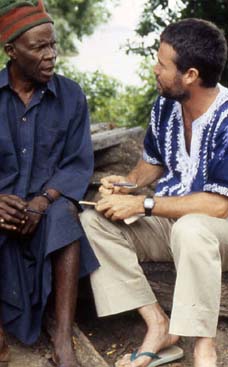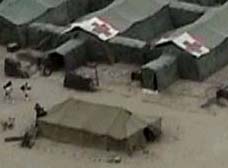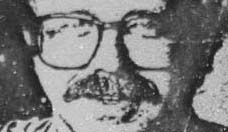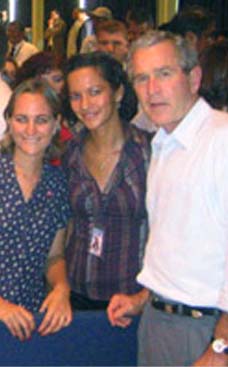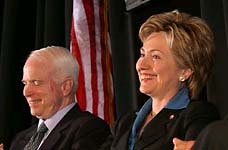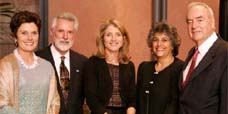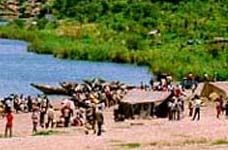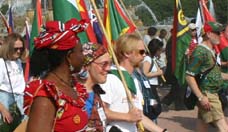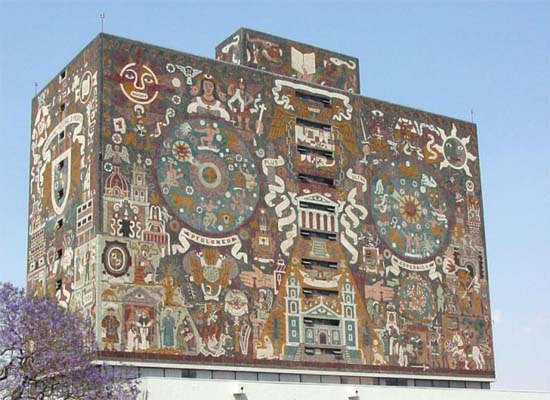
“The Mexico program is the first for which the Peace Corps has recruited highly specialized, technically trained and experienced volunteers to work side by side with highly-skilled and specialized counterparts from the host country,” said Byron Battle, the country director for Mexico. “The objective is to contribute to job creation for Mexican citizens as well as to improve the country’s physical environment.”
Peace Corps Volunteers have teamed up with Mexican scientists in an effort to improve water quality in central Mexico
Working for Peace Corps cleaner water
The U.S.-based Peace Corps has teamed up with Mexican scientists in an effort to improve water quality in central Mexico.
BY BOB KELLY /Special to The Herald Mexico
El Universal
December 17, 2005
In Matehuala, a mining and industrial center north of San Luis Potosi, a team of Mexican and U.S. specialists is completing an engineering study to help find less expensive ways of treating sewage, now being discharged into surface water, than at conventional waste treatment plants.
A second Mexican-U.S. team is working with the state of Guanajuato to develop more efficient processes that can lower operating costs at 12 treatment plants. The inability of municipalities to adequately fund wastewater treatment plants throughout the country has limited their effectiveness, said team member Terry Gould.
In Queretaro, another cross-border team is working on solutions to help the city sharply reduce the loss of water, now estimated at around 75 percent, in the crumbling pipes running under the city’s historic center.
In León, Mexican and U.S. colleagues are assisting small companies in the shoe industry both in reducing pollution and in improving their ability to compete with cheaper products from other countries, including China and Brazil.
The teams include staff members from a network of Mexican research and technical centers that specialize in transferring the latest technology to small and medium-sized businesses, government agencies and non-profit organizations. Their U.S. counterparts are the first Peace Corps volunteers to ever serve in Mexico.
“The Mexico program is the first for which the Peace Corps has recruited highly specialized, technically trained and experienced volunteers to work side by side with highly-skilled and specialized counterparts from the host country,” said Byron Battle, the country director for Mexico. “The objective is to contribute to job creation for Mexican citizens as well as to improve the country’s physical environment.”
The 25 volunteers assigned to Mexico don’t fit the image of young U.S. citizens digging wells in countries such as Mali, where Battle was country director before moving to the headquarters and training center in Queretaro a year ago.
“We have been able to recruit world-class people to use their life skills and experience,” said deputy director Ron Savage. “Some are early retirees; some are in mid-career and looking for a new direction. Our volunteers are receiving and learning from Mexico and realize we have interlocking destinies.”
Although the 44-year-old Peace Corps has sent 171,000 volunteers around the world, it wasn’t invited by Mexico until 2003 because of the often-contentious relationship with the United States. Then the National Council on Science and Technology (CONACYT) asked the corps to recruit experienced professionals to work initially at nine of its 27 centers.
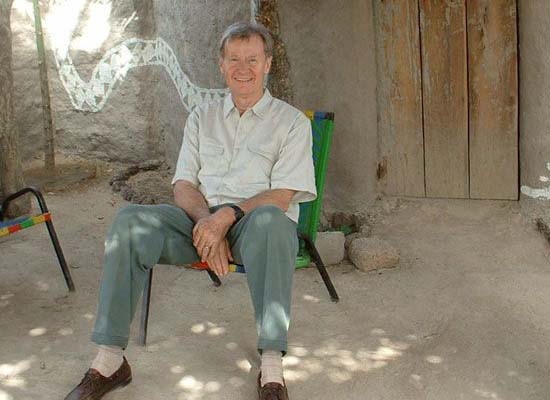
“We’re helping create a team culture,” Battle (above) said. “We’re not coming in and saying you should do it this way. Our people have the advantage of experience in dealing with practical problems. Their approach is to listen and observe so that they can come together as a team with their Mexican colleagues and develop answers to a problem.”
Gould said he decided to volunteer after a 33-year career working on problems with water, wastewater and hazardous materials and becoming a senior vice president for a company in Oregon. He’s applying that experience as a member of teams at the CIDETEQ center in Queretaro that are working on the problems in Matehuala, Queretaro and Guanajuato.
“My decision was driven by three personal goals,” he added. “Give something back based on my experience. Live in another culture long enough to understand and appreciate it. Learn to interact in that culture using the language effectively.”
Gould also cited his daughter’s experience as a Peace Corps volunteer in Ecuador several years ago as a motivating factor.
Joining Gould as a volunteer is his wife, Janice, who is teaching advanced English to Mexican staff members at three centers in the Queretaro area. The Goulds are one of four married couples among the volunteers now in Mexico.
The volunteers sign up for 27- month tours that start with a three-month training program including an immersion course in Spanish and an introduction to Mexican history and culture. While in training, the volunteers live with Mexican families and are encouraged to join with their hosts in experiencing daily life in the city. After completing training, the volunteers are sworn in as Peace Corps members and assigned to a CONACYT center. They receive a living allowance that, Battle said, is below their previous salaries and an apartment for which CONACYT pays the rent, as well as medical and dental care, 48 days of leave and a US$6,075 readjustment allowance when their tour is up.
Paul Ruesch, on leave from the U.S. Environmental Protection Agency regional office in Chicago, isn’t sure he’ll return to his job. In his 13 years as an environmental engineer, Ruesch said he has studied problems on all seven continents.
Assigned to the CIATEC center in León, he is leading a work team that is dealing with oil spills and the contamination of irrigation water around the town of Tula, Hidalgo.
“My eyes have really been opened now to what I feel are much more significant pollution problems than we face in the United States. In some regards I feel we are ‘splitting hairs’ in the United States in many facets of environmental issues. We are arguing over parts per trillion, billion and million when in many countries there are baseball size chunks of contaminants floating in rivers and visible particles of soot falling from the sky.”
His experiences, Ruesch said, “have motivated me to apply my talent and experience in an international venue. I really appreciate the opportunity and platform that the Peace Corps has provided for me as a volunteer.”
When asked what he thought would happen should CONACYT ask for more volunteers, Battle replied, “We believe there are tons of people in the United States who want to contribute and to use their skills working on real problems.”
Formerly with the Chicago Sun-Times, Bob Kelly now resides in San Miguel de Allende.





